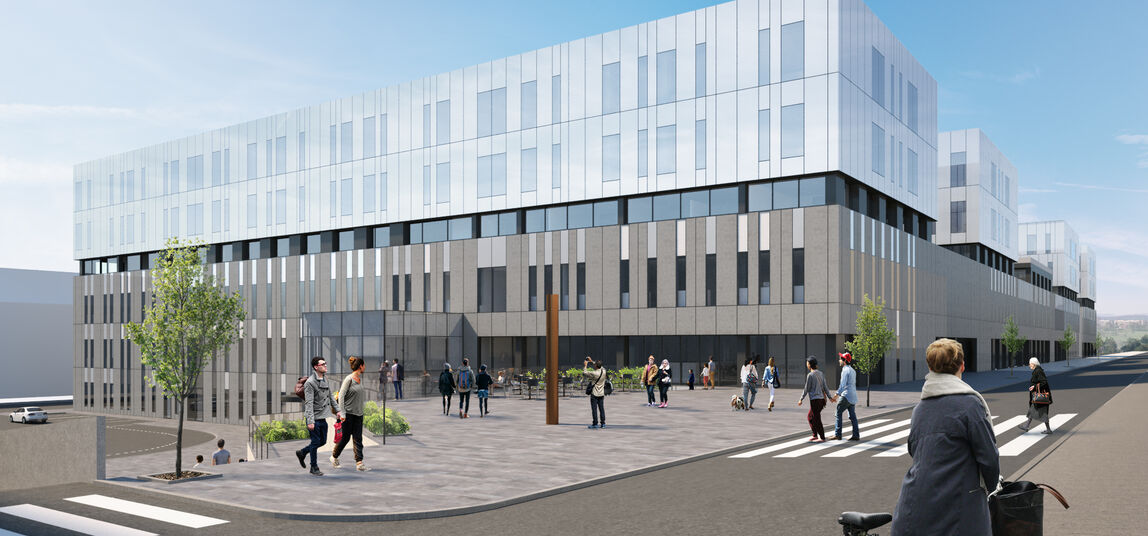About the New National Hospital
According to Act No. 64/2010, a new Landspítali will be built at Hringbraut. Over the next few years, work will be concentrated on the construction of the new treatment centre (hospital). A new patient hotel was taken into use in 2019. In addition, a research building and car park / technical centre / office building will be built. The plan is for construction on all buildings to be completed in the 2030s although the total construction project is expected to take over a decade.
NLSH ohf. is responsible for the New National Hospital project. There is wide-ranging co-operation with stakeholders, including the government, the Government Construction Contracting Agency, Landspítali, the University of Iceland and patient groups. The project has a long history. With the passing of Act No. 64/2010, adopted by the Alþingi in 2010, NLSH could begin the preliminary design of buildings and planning the site. NLSH signed an agreement with the Spital Group, winners of an international design competition held that same year. The years 2010–2012 saw work on preliminary design and land-use plan preparation. Changes were also made to the Reykjavik Municipal Zoning Plan and the area plan for the greater Reykjavik area prepared for the City of Reykjavik.
A new land-use plan at Hringbraut was confirmed in April 2013. In March 2013, the Icelandic Parliament passed an amendment to the act on a new National Hospital at Hringbraut So that the project would, from there on, be a public project in accordance with the Public Projects Procedure Act No. 84/2001.
The national hospital is one of Iceland's most important healthcare institutions and is at the forefront of health services for Icelanders. It is therefore important that the hospital can fulfil its vital function as well as possible. The hospital currently operates in seventeen locations in the greater Reykjavik area, in approximately one hundred buildings. Most of the buildings were designed in the 1950s. It is clear that the purpose and operations of hospitals have changed enormously since then, and these buildings do not meet modern requirements. Current facilities can no longer receive the equipment needed for modern health care due to lack of space, ceiling height and load bearing capacity.
The changing role of Landspítali, increased knowledge of the links between hospital design and treatment, new and space-consuming equipment and privacy demands of patients and their next of kin are all factors calling for new facilities for Landspítali.
Access points to the Hringbraut site have proven to be the best option of those considered. There is good access for patients, and it will be better still with the planned construction of a transport centre in the vicinity of the hospital. Part of the staff can walk or cycle to work at Hringbraut, which increases economisation.
There is wide-ranging collaboration between the University of Iceland, Reykjavik University, Landspítali and companies, including those in the knowledge cluster in Vatnsmýri. This proximity provides invaluable opportunities for the new Landspítali, as synergies with the knowledge-based society are highly important. The presence of the academic community in the immediate environment supports knowledge creation at the hospital while providing solid groundwork for training students in healthcare professions.
The new hospital will fulfil modern health service requirements. This is a hospital for new times, a hospital that is up to the task of being a hospital for all Icelanders.
